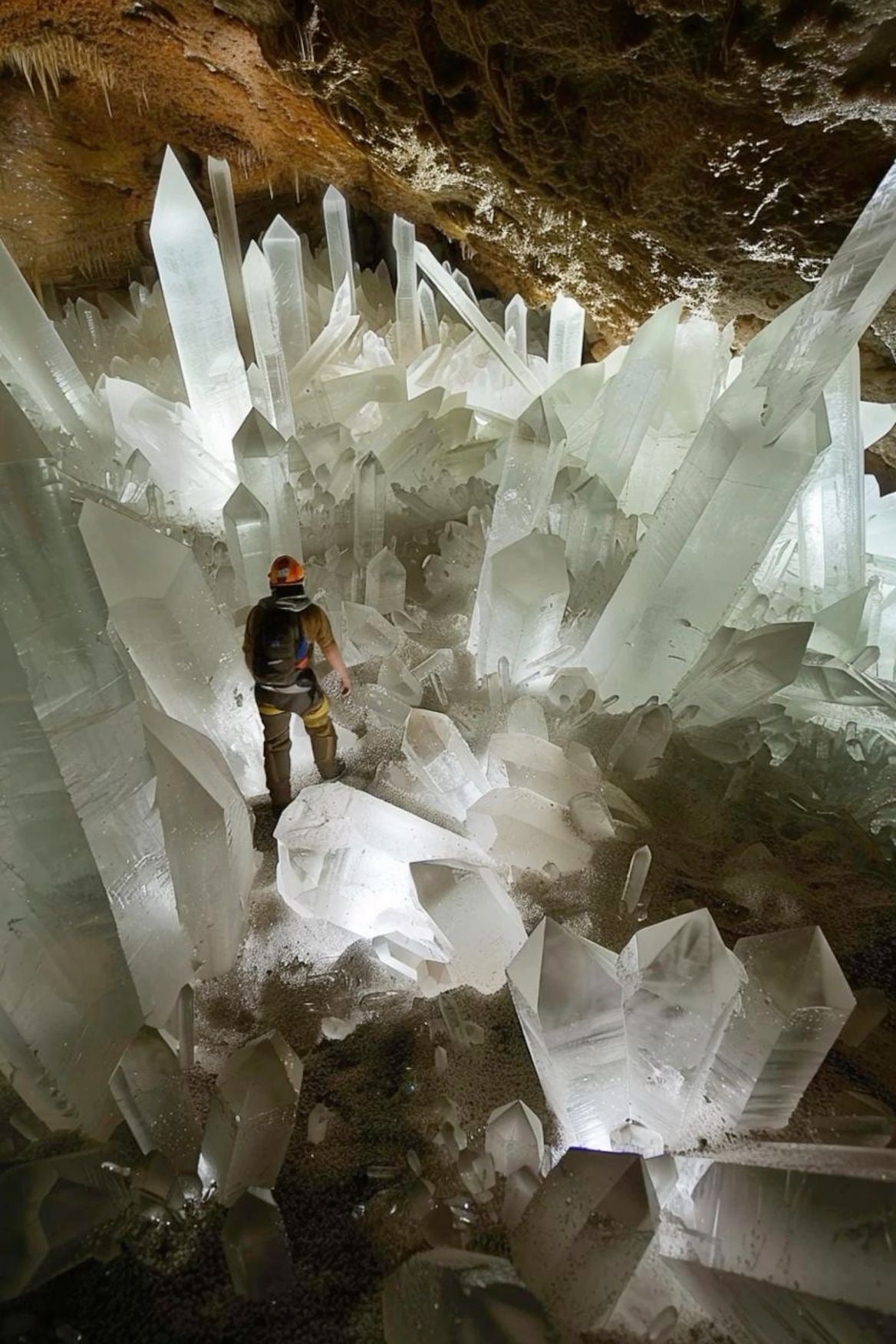
The Astonishing Naica Crystal Mine
Deep in the arid state of Chihuahua, Mexico, lies a secret that seems more fantasy than geology: the Naica Mine and its subterranean chambers containing some of the largest natural crystals ever discovered. Although the public can’t wander these tunnels, the story of Naica captures the imagination — and connects beautifully to the energy, rarity, and wonder of crystals
The Naica Mine is primarily a working mine for lead, zinc, and silver mineral deposits. What many don’t realize is that, deep beneath the mine, a series of caverns formed over hundreds of thousands of years in hydrothermal conditions.

A Hidden World Discovered by Accident
In April 2000, miners accidentally broke through into one of these chambers while drilling through a fault zone. What they discovered was nothing short of astonishing: a cavern filled with giant, clear gypsum (selenite) crystals. This chamber became known as the Cave of the Crystals (Cueva de los Cristales).
Other nearby caverns were also discovered, including the Cave of Swords, which sits above the Crystal Cave and contains somewhat smaller but still impressive crystals
Monumental Dimensions
The crystals in the Cave of the Crystals are extraordinary. Some measure more than 11 meters in length, span up to 4 meters in diameter, and may weigh dozens of tons (some estimates put the largest at ~55 tons) The chamber itself is roughly 109 m long with a volume estimated at 5,000–6,000 m³.
These crystals are made of gypsum (calcium sulfate dihydrate, CaSO₄·2H₂O), commonly referred to in this context as selenite.

How These Crystals Formed
The story of their genesis is entwined with deep Earth heat, groundwater, and slow crystallization:
-
Below the cave is a magma chamber whose residual heat warms subterranean waters.
-
That heated water becomes saturated with mineral constituents (especially calcium and sulfate) under pressure.
-
Because of density and temperature gradients, oxygenated cooler water from the surface diffuses slowly inward, triggering oxidation and sulfate formation, which precipitates minerals.
-
Over hundreds of thousands of years, these conditions allowed the gypsum crystals to slowly grow to colossal proportions.

Hostile Environment & Access Issues
The cave’s microclimate is anything but comfortable. Temperatures can reach 58 °C, with humidity levels nearing 90–100%. These conditions, combined with the delicate nature of the crystals, mean that even researchers can only stay inside for limited time.
To mitigate these challenges, scientists have used specialized cooling suits (with circulating cold water and ice packs) and breathing apparatuses to explore for short windows.
Since 2015, parts of the mine have been allowed to flood, meaning the cave is currently inaccessible to exploration until pumping resumes.


Leave a comment